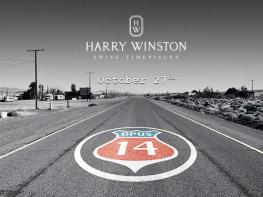There are certain elements, whether they are physical or less tangible, that are compulsory in a Harry Winston Opus series watch. The most obvious of these is the concept that lies at the very heart of the series: that it could be a collaborative effort between the brand and another watchmaker or movement designer and that it should contain the signature design elements of both. It is what makes the series so special and sets it apart from other special series. Let us not forget that the high-end watches from Harry Winston also include two other special series: the Project Z and the Histoire de Tourbillon.
Looking back over the history of the Opus series, there are some commonalities that might give a hint of what to expect of the Opus 14. It will no doubt come with a precious metal case, most likely in white gold based on the frequency it has been used for previous models. Because of the complications and the need to show off either the movement or the functions of the piece it is highly likely to come with a manually wound movement, since only one model in the series so far, the Opus 9, had an automatic movement. More tellingly, only three of the 13 models produced in the Opus series have had watch hands in the conventional sense and many have offered original and alternative ways of displaying the time. We can therefore confidently expect the Opus 14 to defy conventions once again when it comes to displaying the time.
Case size will, of course, depend on the movement and complication within. But it must also fit with the times. After the folly of the mid-2000s, with sizes reaching up to 56mm, we may well see a more modest size. Power reserves in the series have declined steadily from a peak of 122 hours to just 35. This may just be coincidental, but if the trend continues it may well open up the possibility of an energy-hungry and therefore visually impressive complication.
And who might buy the new piece? The first models in the series were more than just unique pieces, they were showcases for world-firsts in terms of technology and remained strictly limited editions destined for only the finest connoisseurs. But the limited editions went on to peak at a rather high 100 pieces. My guess is that the new piece will bring back a much higher level of exclusivity.
Most important of all, however, is that this will be the first model in the Opus series to be produced since the Swatch Group acquired Harry Winston. Whoever the mystery watchmaker or movement constructor is, they will have been able to work with the combined research, development and production resources of the world’s biggest watchmaking group. The result therefore promises to be even more spectacular than any of the previous watches in the Harry Winston Opus series.





